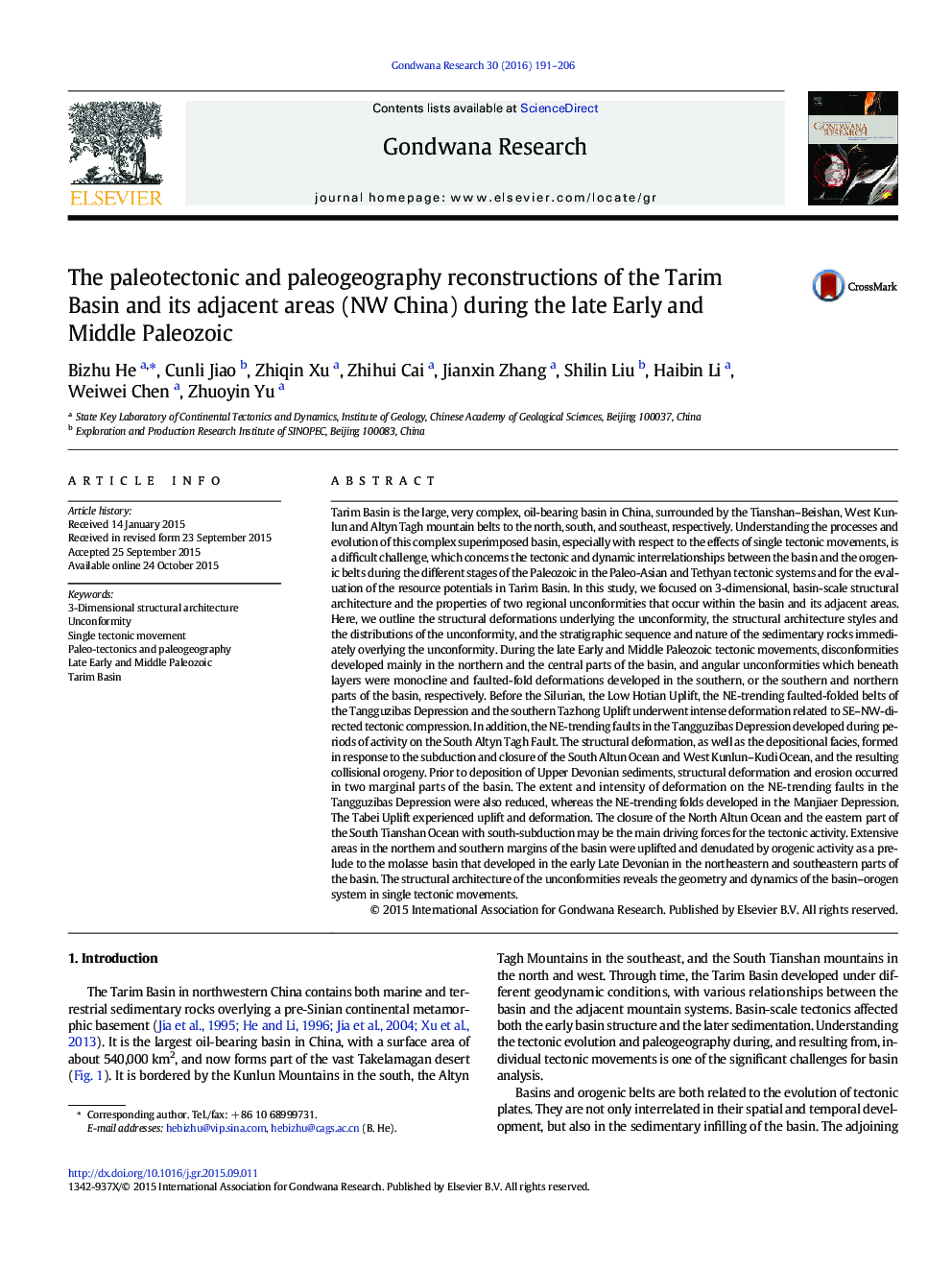| کد مقاله | کد نشریه | سال انتشار | مقاله انگلیسی | نسخه تمام متن |
|---|---|---|---|---|
| 4726663 | 1640141 | 2016 | 16 صفحه PDF | دانلود رایگان |

• 3D structure of unconformity for effects of a single tectonic movement in a superposed basin.
• Paleo-tectonic and paleogeography reconstruction prior to Silurian and Late Devonian.
• Deformations in basin related to the South Altun and North Kunlun orogenesis during late Early Paleozoic.
• Deformations related to the North Altun and South Tianshan orogenesis during Middle Paleozoic.
• Paleo-uplift evolutions differently responded to the tectonism of basin periphery orogens.
Tarim Basin is the large, very complex, oil-bearing basin in China, surrounded by the Tianshan–Beishan, West Kunlun and Altyn Tagh mountain belts to the north, south, and southeast, respectively. Understanding the processes and evolution of this complex superimposed basin, especially with respect to the effects of single tectonic movements, is a difficult challenge, which concerns the tectonic and dynamic interrelationships between the basin and the orogenic belts during the different stages of the Paleozoic in the Paleo-Asian and Tethyan tectonic systems and for the evaluation of the resource potentials in Tarim Basin. In this study, we focused on 3-dimensional, basin-scale structural architecture and the properties of two regional unconformities that occur within the basin and its adjacent areas. Here, we outline the structural deformations underlying the unconformity, the structural architecture styles and the distributions of the unconformity, and the stratigraphic sequence and nature of the sedimentary rocks immediately overlying the unconformity. During the late Early and Middle Paleozoic tectonic movements, disconformities developed mainly in the northern and the central parts of the basin, and angular unconformities which beneath layers were monocline and faulted-fold deformations developed in the southern, or the southern and northern parts of the basin, respectively. Before the Silurian, the Low Hotian Uplift, the NE-trending faulted-folded belts of the Tangguzibas Depression and the southern Tazhong Uplift underwent intense deformation related to SE–NW-directed tectonic compression. In addition, the NE-trending faults in the Tangguzibas Depression developed during periods of activity on the South Altyn Tagh Fault. The structural deformation, as well as the depositional facies, formed in response to the subduction and closure of the South Altun Ocean and West Kunlun–Kudi Ocean, and the resulting collisional orogeny. Prior to deposition of Upper Devonian sediments, structural deformation and erosion occurred in two marginal parts of the basin. The extent and intensity of deformation on the NE-trending faults in the Tangguzibas Depression were also reduced, whereas the NE-trending folds developed in the Manjiaer Depression. The Tabei Uplift experienced uplift and deformation. The closure of the North Altun Ocean and the eastern part of the South Tianshan Ocean with south-subduction may be the main driving forces for the tectonic activity. Extensive areas in the northern and southern margins of the basin were uplifted and denudated by orogenic activity as a prelude to the molasse basin that developed in the early Late Devonian in the northeastern and southeastern parts of the basin. The structural architecture of the unconformities reveals the geometry and dynamics of the basin–orogen system in single tectonic movements.
Figure optionsDownload as PowerPoint slide
Journal: Gondwana Research - Volume 30, February 2016, Pages 191–206